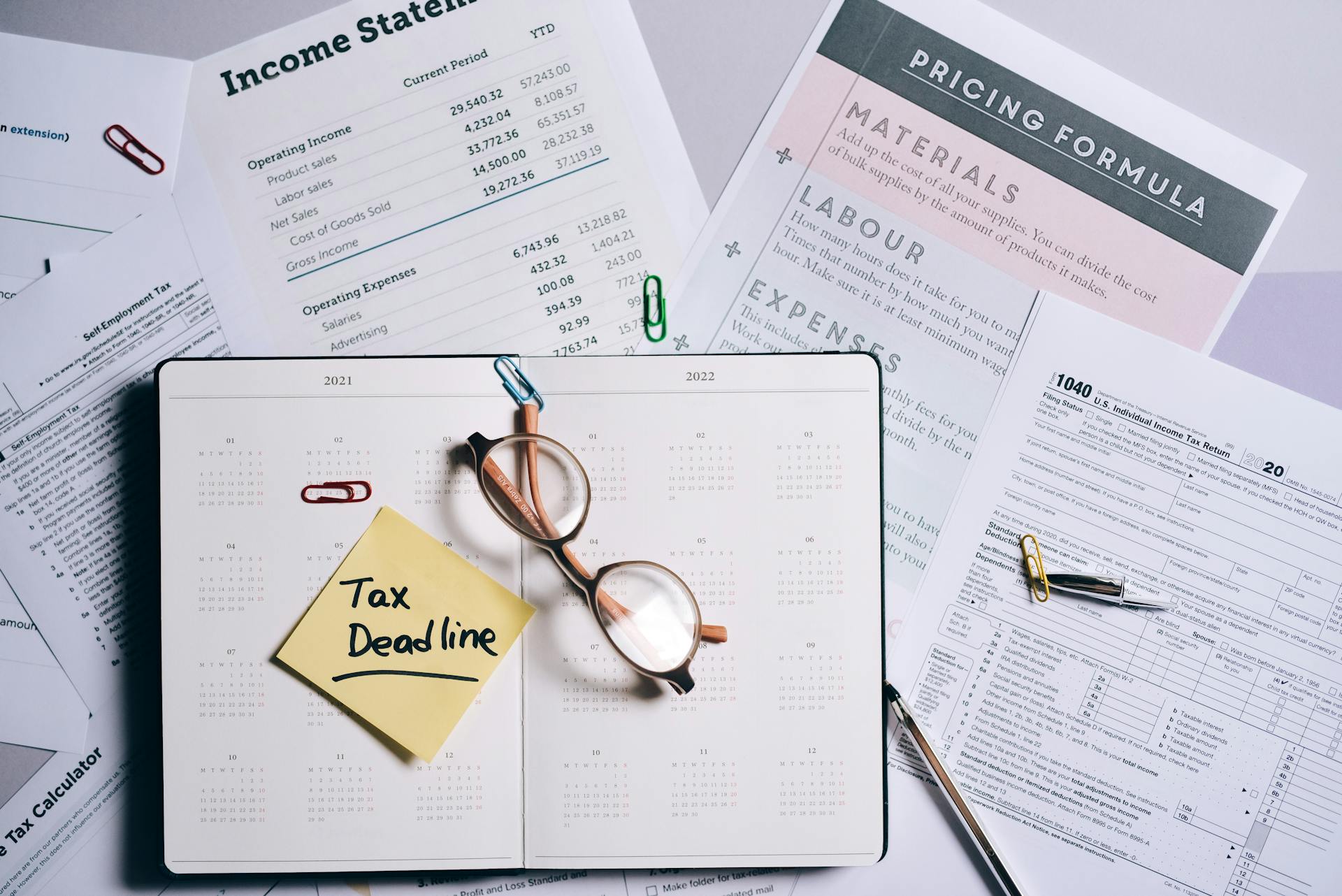
An adjusting entry for accrued expenses is a crucial step in accounting that ensures accurate financial reporting. Accrued expenses are expenses that have been incurred but not yet paid or recorded in the financial statements.
Accrued expenses can include items such as rent, salaries, and utilities that are due but not yet paid. These expenses are recorded as liabilities on the balance sheet.
The adjusting entry for accrued expenses involves debiting an expense account and crediting a liability account. For example, if a company has incurred $1,000 in rent expenses but hasn't paid it yet, the adjusting entry would debit Rent Expense and credit Accrued Rent Liability.
The purpose of this adjusting entry is to match the expense with the period in which it was incurred, providing a more accurate picture of the company's financial performance.
What is an Adjusting Entry?
An adjusting entry is a journal entry made to match revenues with the periods they are earned in and expenses with the periods they are incurred in.
It's a necessary step in accounting to ensure accurate financial reporting.
A company takes out a loan on December 1, and the terms require interest payments every three months, with the first payment due on March 1.
An adjusting entry is needed to reflect the accrued interest expense for December.
The adjusting entry will debit interest expense and credit interest payable for the amount of interest from December 1 to December 31.
This entry ensures that the company's financial statements accurately reflect its operations and profitability.
Recording Accrued Expenses
Accrued expenses are recognized expenses that have been incurred but not yet paid for. You can gain accrued expenses in various ways, such as accrued interest on a loan, accrued wages for employees, or accrued utilities used by your business.
To record accrued expenses, you need to create an accrued expense journal entry. This involves debiting an expense account and crediting an Accrued Liabilities account. For example, if an employee earns $100 per day and worked on December 29th, 30th, and 31st but hasn't been paid yet, the adjusting entry on December 31st would be:
Debit Wage Expense: $300
Credit Accrued Wage Expense: $300
This entry recognizes the $300 wage expense incurred in December, even though the payment will be made in January.
Accrued expenses work with expense and liability accounts. A debit increases expense accounts, and a credit decreases expense accounts. Oppositely, a credit increases liability accounts, and a debit decreases liability accounts.
To create an accrued liabilities journal entry, follow these steps:
- Debit the Expense account (e.g., Wage Expense: $300)
- Credit the Accrued Liabilities account (e.g., Accrued Wage Expense: $300)
This entry is a temporary adjustment between accounting periods. When you pay the amount due, you'll reverse the original entry in your books.
Here's a summary of the steps to record accrued expenses:
Keep in mind that accrued expenses are reversing entries, used to adjust your books between accounting periods.
Adjusting Journal Entries
Adjusting journal entries are most commonly accruals, deferrals, and estimates. Accruals refer to payments or expenses on credit that are still owed, while deferrals refer to prepayments where the products have not yet been delivered.
A company that takes out a loan from the bank on December 1 needs to accrue interest expenses for the months of December, January, and February. To accurately report the company's operations and profitability, the accrued interest expense must be recorded on the December income statement.
The main two types of adjusting journal entries are accruals and deferrals. Accruals involve payments or expenses on credit that are still owed, such as interest on a loan.
To record accrued expenses, you need to create an accrued expense journal entry. This involves debiting an Expense account and crediting an Accrued Liabilities account.
You incur an expense at the end of the accounting period, and you owe a debt but have not yet been billed. You need to make an accrued liability entry in your books, which is a debit to an Expense account and a credit to an Accrued Liabilities account.
The accrued liability entry is a temporary entry used to adjust your books between accounting periods. At the beginning of the next accounting period, you pay the expense and reverse the original entry in your books.
Cash vs Accrual Accounting
Cash accounting recognizes expenses and revenues only when money is received or paid, whereas accrual accounting allows for a lag between payment and product.
Accrual accounting is a more accurate method because it records expenses and revenues as they are incurred, not just when the cash changes hands.
Accruals, such as rent paid at the end of the month, are revenues and expenses that have not been received or paid yet, but are still recorded through an accounting transaction.
This difference in timing is crucial because it affects the financial statements and the decision-making process of business owners.
For instance, an accrual accounting system would record the rent expense in the month it is occupied, even if the payment is made later.
Example and Step-by-Step
Let's break down the example of an adjusting entry for accrued wages. An employee earns $100 per day and worked on December 29th, 30th, and 31st, but hasn't been paid yet. The company needs to record an accrued wage expense for these three days.
The adjusting entry on December 31st would be to debit Wage Expense for $300, recognizing the wage expense incurred in December. This entry is made even though the payment will be made in January.
When the payment is made, the company will debit Accrued Wage Expense and credit Cash to remove the liability and reflect the cash outflow.
Sources
- https://www.investopedia.com/terms/a/adjusting-journal-entry.asp
- https://www.deskera.com/blog/adjusting-entries/
- https://www.patriotsoftware.com/blog/accounting/what-are-accrued-liabilities-examples-journal-entry/
- https://www.pearson.com/channels/financial-accounting/learn/brian/ch-3-accrual-accounting-concepts/adjusting-entries-accrued-expenses
- https://corporatefinanceinstitute.com/resources/accounting/adjusting-journal-entry/
Featured Images: pexels.com


